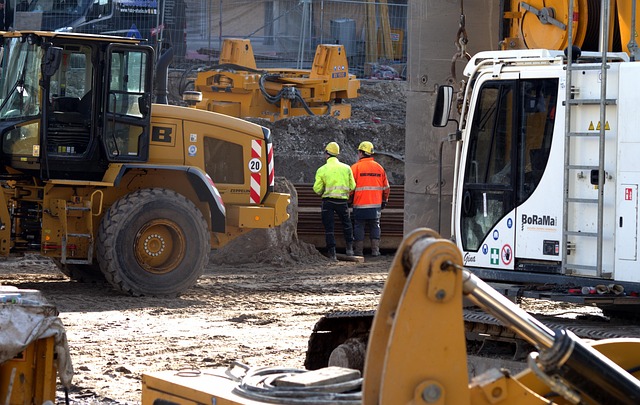Advanced vacuum excavation technology is transforming site preparation in urban and industrial settings, offering a safe, efficient, and precise method for underground utility work. This innovative approach minimizes damage to nearby structures and services, reduces labor costs, and expedites project timelines, making it ideal for bustling urban environments. Its benefits include improved operator safety, quieter operations, reduced emissions, and minimal site disruption, as demonstrated through successful case studies in both metropolitan areas and industrial sites.
Reliable vacuum excavation is a game-changer for urban and industrial sites, offering efficient and precise soil removal. This article delves into the world of advanced vacuum excavation technology, exploring its basics, benefits, and innovative features that set it apart. We examine real-world applications, highlighting successful case studies that showcase its versatility and reliability in diverse environments. Discover how this cutting-edge method is revolutionizing excavation projects across industries.
Understanding Vacuum Excavation: The Basics and Benefits
Vacuum excavation, also known as vacuum trenching or non-destructive excavation, is a powerful and versatile technique that has transformed the way we approach urban and industrial site preparation. It involves using an advanced vacuum excavation technology to remove soil and other materials from a specific area without causing damage to nearby structures or underground utilities. This method has become increasingly popular due to its numerous benefits.
The primary advantage lies in its precision and safety. Unlike traditional excavation methods, vacuum excavation is highly controlled, minimizing the risk of hitting hidden pipes or cables. It uses powerful vacuums to suck up soil and debris, leaving behind clean, undisturbed trenches. This makes it ideal for urban environments where accessibility and safety are paramount. The advanced vacuum excavation technology also allows for faster and more efficient site preparation, reducing project timelines and labour costs.
Advanced Vacuum Excavation Technology: Innovations and Features
Advanced vacuum excavation technology has revolutionized the way urban and industrial sites are prepared, offering precise, efficient, and safe methods for underground utility location and excavation. These innovations go beyond traditional vacuum excavation machines by incorporating intelligent design elements and sophisticated control systems. Modern machines now feature advanced sensors that detect and map underground utilities in real-time, minimizing damage risks and ensuring compliance with regulatory standards.
Moreover, improved material handling capabilities enable the efficient removal of diverse soil types, from loose topsoil to compacted rock. Automation has also been integrated into these technologies, allowing for remote control and monitoring, which boosts operator safety and project productivity. Additionally, advanced vacuum excavation systems are designed for minimal environmental impact, featuring quieter operations and reduced emissions, making them suitable for urban environments where noise and pollution levels must be kept low.
Applications: Reliable Vacuum Excavation in Urban and Industrial Sites
Reliable vacuum excavation is a versatile and essential process for both urban and industrial sites, revolutionizing the way we handle underground utility work. This advanced vacuum excavation technology offers numerous applications, making it a game-changer in the construction and maintenance sectors. By employing powerful vacuums, this method safely and efficiently removes soil and debris from narrow spaces and complex underground environments.
In urban settings, it is particularly valuable for working around delicate infrastructure like roads, sidewalks, and close proximity to buildings. Vacuum excavation allows for precise cutting and removal of soil without damaging adjacent structures or services. For industrial sites, this technology facilitates the safe clearing of large areas, enabling efficient access for installation, repair, or maintenance work. Its non-destructive nature ensures minimal site disruption, reducing costs and expediting project timelines.
Case Studies: Success Stories of Vacuum Excavation Implementation
Vacuum excavation, powered by advanced vacuum excavation technology, has proven its mettle in numerous urban and industrial case studies, showcasing remarkable success stories across diverse sectors. In bustling metropolitan areas, where traditional digging methods can disrupt daily life, vacuum excavation offers a quieter, cleaner, and more efficient alternative. For instance, in one such project, a major city successfully employed this technology to install new underground utilities without causing significant traffic disruptions or damaging existing infrastructure.
Industrial sites also benefit immensely from advanced vacuum excavation technology. In a recent case, a manufacturing plant utilized vacuum excavation for precise trenching, enabling them to safely and efficiently install new pipelines without hindering production schedules. The method’s non-invasive nature, coupled with superior accuracy, ensures minimal site disruption and faster project completion times, making it an increasingly popular choice for modern construction and infrastructure development.
Reliable vacuum excavation is no longer a niche concept but an established, efficient solution for urban and industrial sites. With the advancements in advanced vacuum excavation technology, professionals now have a versatile tool that enhances safety, minimizes damage, and reduces costs. As demonstrated by successful case studies, this innovative approach offers numerous benefits across various sectors, ensuring it remains a game-changer in the field of excavation for years to come.
